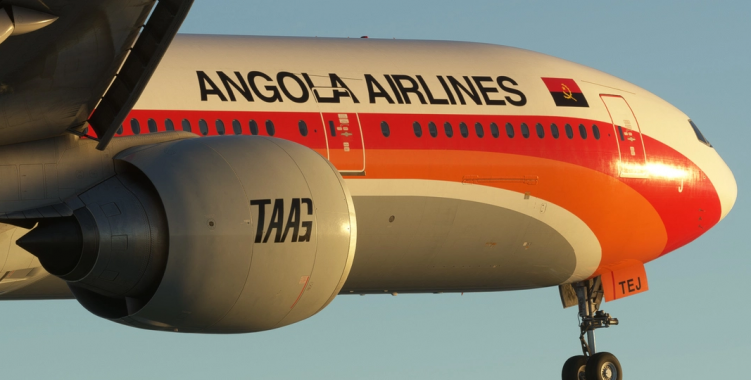Access selected deals available with budget and full-service airlines
Lock any airfare that sounds great. You don’t lose anything if you cancel it
Call us anytime for any assistance. We do not go into hibernation
Your personal and financial information stays secure with us
TAAG Angola Airlines, officially TAAG Linhas Aéreas de Angola E.P., is the state-owned flag carrier of Angola, headquartered in Luanda. Founded in 1938 as DTA – Divisão dos Transportes Aéreos, it was renamed TAAG in 1973 and became Angola’s flag carrier in 1975. Operating from Quatro de Fevereiro Airport (LAD), with a planned transition to Dr. Antonio Agostinho Neto International Airport by Q1 2025, TAAG serves 31 destinations, including 13 domestic and 18 international routes across Africa, Europe, Asia, and Latin America. With a fleet of 26 Boeing and Airbus aircraft, including a new Boeing 787-9 Dreamliner, TAAG emphasizes safety, modernization, and Angolan hospitality. Despite a 2022 profit of $800,000, the airline faces challenges with customer service, baggage handling, and delays, though its fleet expansion and codeshare agreements signal growth ambitions, including a planned Luanda–Houston route by 2027.

TAAG Angola Airlines traces its origins to 1938, when the Angolan government established DTA – Divisão dos Transportes Aéreos to serve domestic routes. On October 1, 1973, it was reorganized and renamed TAAG – Transportes Aéreos de Angola, with shareholders including the Angolan government (51%), TAP Air Portugal (29%), and former DTA employees (20%). Following Angola’s independence from Portugal in 1975, TAAG became the national flag carrier in October, adopting the Palança Negra (black antelope) in its livery. The first Boeing 737-200 was delivered in November 1975, marking a shift to jet operations.
The 1980s and 1990s saw fleet diversification with Boeing 707s, 737s, Fokker F27s, Yakovlev Yak-40s, and Lockheed L-100s, serving domestic and international routes like Lisbon, Paris, and Havana. A tragic accident occurred on January 31, 1995, when a Boeing 727-200 (D2-TJB) crashed on landing at Huambo, damaging the landing gear due to aquaplaning, though no serious injuries were reported. By March 1990, TAAG employed 5,770 staff and operated TAAG-Air Charter and TAAG Aviação Ligeira as subsidiaries.
Financial struggles persisted, with losses peaking at $175 million in 2014. A 10-year management agreement with Emirates, signed in September 2014, reduced losses to $5 million by 2016 through codesharing and operational efficiencies, but Emirates terminated the contract in 2017 over difficulties repatriating $340 million in revenues from Angola. The COVID-19 pandemic halted operations in 2020, with services resuming using new De Havilland Dash 8-400s for domestic routes and Boeing 777s for long-haul flights. In 2022, TAAG reported a profit of $800,000, driven by cargo operations. The airline launched its first passenger flight from the new Dr. Antonio Agostinho Neto International Airport on November 10, 2024, signaling a hub transition by Q1 2025. In March 2025, TAAG announced plans for a Luanda–Houston route by 2027, pending FAA Category 1 certification.
As of June 2025, TAAG operates a fleet of 26 aircraft: five Boeing 777-300ERs, three Boeing 777-200ERs, seven Boeing 737-700s, six De Havilland Dash 8-400s, two Airbus A220-300s, one Boeing 787-9 Dreamliner, and two cargo aircraft (Boeing 737-800BCF and 737-700). The 787-9, delivered in January 2025 from AerCap, features a new livery with the black antelope and samakaka fabric patterns, seating 313 passengers in three classes. Four 787s (two 787-9s, two 787-10s) will join by 2026, with Unum One Business Class seats and Panasonic Avionics entertainment. The fleet’s average age is approximately 12 years, with plans to phase out older 737-700s and 777s by 2027, potentially adding Boeing 737 MAX aircraft.
Sustainability efforts include adopting fuel-efficient A220-300s and 787s, reducing emissions on regional and long-haul routes. TAAG’s cargo division, bolstered by a second 737-800F expected in 2025, supports economic sustainability. The airline aims to expand its fleet to 50 aircraft by 2027, enhancing operational efficiency and environmental performance.